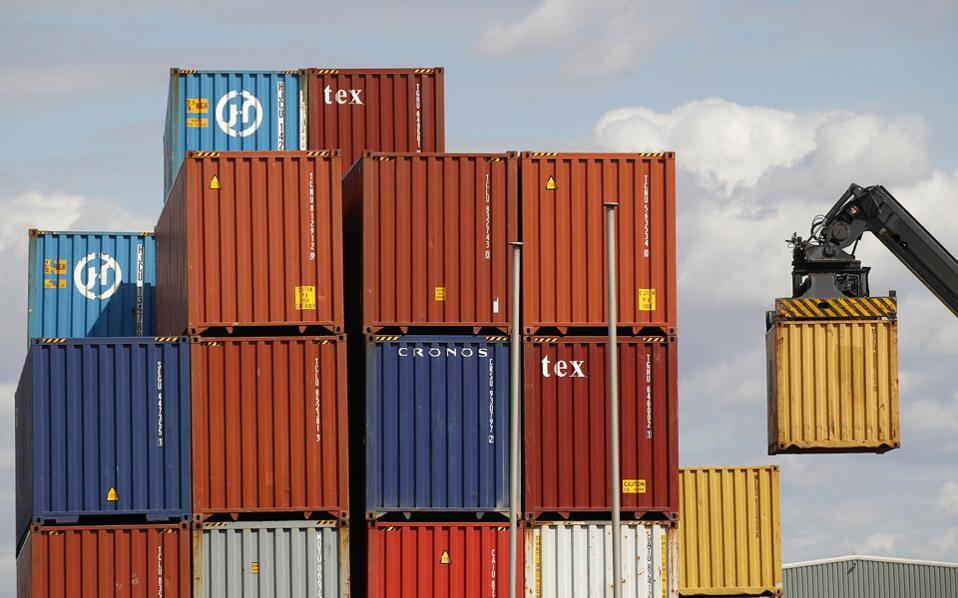Exports down 8 percent in first half of 2016

Greece’s exports fell by 8 percent in the first half of 2016 – the third largest drop in the 28-member European Union. The country’s exporters attributed this to Greek companies’ exhaustion in the face of years of recession and the capital controls that were imposed last summer. The lack of liquidity is making it impossible for businesses to adopt aggressive marketing strategies for Greek products.
According to Eurostat, the value of exports in the January-June period came to 12 billion euros, of which 7.1 billion was to fellow EU members and the other 4.9 billion to third countries. Exports to EU states were up 1 percent from the same period last year, but exports to third countries were down 18 percent in the same period.
The largest percentage drop among the 28 member-states was noted in Cyprus, which posted a 21 percent slide, followed by the UK on 11 percent.
The situation for Greek exports may soon worsen in some markets – in Britain, for example, where the pound has weakened against the euro. Greece’s imports in the first half of this year were down 4 percent, to 21.5 billion euros, for a trade deficit of 9.5 billion euros, of which 4.8 billion was with EU partners and 4.7 billion with third countries.
Eurostat’s figures confirm the decrease in Greek exports this year but also the decline in comparison with our partners, despite efforts in recent years to improve the Greek economy’s competitiveness.
Spain’s and Ireland’s exports grew by 2 and 1 percent respectively in the first half of 2016, while in Portugal exports dropped 2 percent. The greatest rise in exports was recorded in the Czech Republic (7 percent), Malta (5 percent) and Hungary, Croatia, Romania and Slovenia (all 4 percent). Germany, the EU member with the largest export trade (604.4 billion euros in H1), saw exports rise 1 percent.
Eurostat reported that in H1 2016, euro area exports of goods to the rest of the world fell to 1,005.5 billion (-1 percent compared to the same period a year earlier), while imports fell to 871.0 billion (-3 percent year-on-year). As a result the eurozone recorded a surplus of 134.5 billion euros, compared with 111.4 billion in January-June 2015. Intra-euro area trade remained nearly stable at 855.9 billion euros in January-June 2016.





